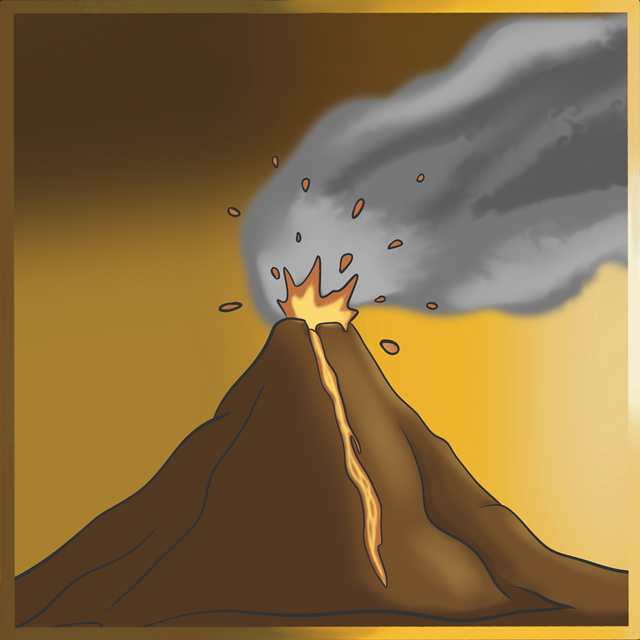Definition:
A “volcano” is a geological formation, typically a mountain, where molten rock (magma), ash, and gases from the Earth’s interior erupt through the Earth’s crust.
Etymology:
The word “volcano” comes from the name of Vulcano Island in the Mediterranean Sea, which itself was named after Vulcan, the Roman god of fire and metalworking. The term was adopted into English in the 17th century to describe similar geological features.
Description:
The study of volcanoes is called volcanology.
There are several types of volcanoes, including:
- Shield Volcanoes: Broad, gently sloping mountains formed by low-viscosity lava flows (e.g., Mauna Loa in Hawaii).
- Stratovolcanoes (Composite Volcanoes): Steep-sided, symmetrical cones built from alternating layers of lava flows, ash, and other volcanic debris (e.g., Mount Fuji in Japan, Mount St. Helens in the USA).
- Cinder Cone Volcanoes: Small, steep-sided cones built from volcanic debris, primarily cinders and ash (e.g., Paricutin in Mexico).
- Lava Domes: Formed by viscous lava that does not flow far from the vent, creating a dome-shaped mound (e.g., Novarupta in Alaska).
Eruptions can vary from effusive (lava flows) to explosive (violent ejections of ash and rock). The style of eruption depends on the magma’s composition, temperature, and gas content.
Symbolism:
Volcanoes symbolize both creation and destruction due to their ability to create new landforms and simultaneously devastate surrounding areas. They also represent power, unpredictability, and transformation. In mythology and literature, volcanoes often symbolize intense emotions, such as anger or passion.
Volcanoes often have a cone-shaped structure, especially when they are inactive or dormant. This cone shape is formed by layers of volcanic ash, lava, and other materials that build up over time. A volcano can carry symbolism similar to that of the Tower of Babel, which is the same symbol as the Illuminati symbol.
In some contexts, a volcano is interpreted as a phallic symbol, particularly evident during eruptions, which symbolize ejaculation.
In certain cultures or artistic interpretations, a volcano could potentially be seen as a symbol for a vagina due to its crater-like shape and the imagery of eruption, which may be metaphorically associated with fertility or the concept of creation.
Religion:
According to the creation myth of the religion Scientology, based on the teachings of L. Ron Hubbard, the founder of Scientology, billions of years ago, the dictator of a Galactic Confederacy named Xenu transported billions of frozen people to Earth and disposed of them in volcanoes, where they melted and died before their souls rose up from the volcano. Xenu then captured these souls, brainwashed them, and released them on Earth to find and take over bodies.
While volcanoes themselves are not always specifically mentioned, many religious texts refer to mountains and natural phenomena that can be interpreted as volcanic activity:
- Bible: Mount Sinai, where Moses received the Ten Commandments, is often described with volcanic-like imagery, such as fire, smoke, and tremors (Exodus 19:18).
- Hindu Texts: Some descriptions of cosmic mountains in Hindu mythology, such as Mount Meru, are imbued with fiery, volcanic attributes.
- Other Religious Texts: In various mythologies, volcanic mountains are considered the abodes of gods or spirits, such as Pele, the Hawaiian goddess of volcanoes.
Many ancient cultures, including the Romans, Greeks, and Hawaiians, revered volcanoes and associated them with deities and supernatural powers. Volcanic eruptions were often seen as divine retribution or signs from the gods.
